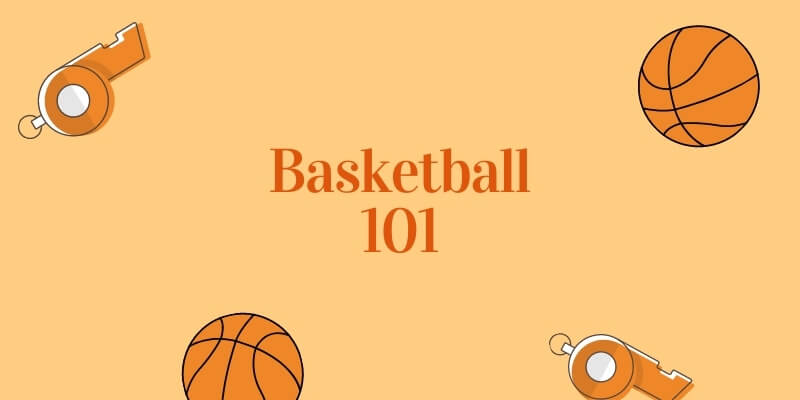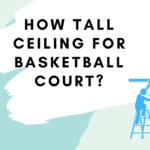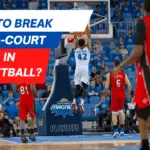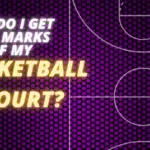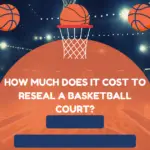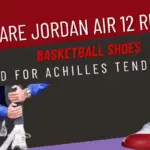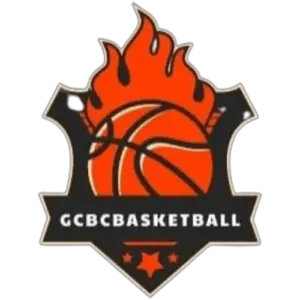Basketball is one of the most popular sports in the world with over 2.2 billion followers worldwide. After football and cricket, basketball is widely played and followed. It is most popular in the United States, Philippines, Canada, Japan, China, and Argentina, along with Spain, Russia, England, and Australia.
Basketball is not only played at a professional level, but also it is one of the most popular sports in schools and colleges. Even teenagers and adults play basketball on courts at different recreational settings and driveways. Also, it is an Olympic sport.
If we talk about professional basketball leagues, then the National Basketball Association (NBA) is the most significant league in North America.
History
The history of basketball is very interesting. James Naismith invented the game in the year of 1891 at the International Young Men’s Christian Association (YMCA) Training School in Springfield, Massachusetts. He was teaching physical education at that time.
One day he was planning to keep his class active when it was raining outside. He got an idea to engage his students by playing an indoor game. Here, he discovered a basketball game. He took a peach basket, nailed it above the ground at some height, and then directed his students to make two teams where the goal of each team was to score points by tossing the soccer ball into the basket.
In the early days of basketball, the ball was brown in color, having laces. But in the late 1950s, the orange color basketball was introduced, and it is commonly used up till now. Peach baskets were common until 1906, and then the hoops with backboards took their place.
In the starting years of basketball, there was no particular rule on how many players should be in a team. In 1984, five players were allowed that increased to seven and nine in the same year. But in 1985, it was again set to five players, and since then, only five players are allowed to play for one team in a court at a time.
Basketball Court
Basketball courts are rectangular in shape. The sport is usually played indoors, where the hoop is elevated 10 feet above the ground at each end and attached to a backboard. The hoop (rim) is 18 inches in diameter, and the backboard is 72 inches wide and 42 inches tall. The size and height of the rim and the backboard size are the same for all game levels.
The playing surface of the indoor basketball court is usually made up of hard maple wood. On the other hand, floors of the outdoor courts are usually made of concrete or asphalt.
WNBA court size? The WNBA court size is 94 feet (28.65 meters) in length and 50 feet (15.24 meters) in width.
Court Size
Basketball courts have different sizes. NBA, WNBA, and NCAA courts are 94 feet long and 50 feet wide. But FIBA and NFHS courts differ in length. The international courts are 91.9 feet long and 49.2 feet wide, whereas NFHS courts are 84 feet long and 50 feet wide.

The NCAA regulates the college basketball game, whereas the NFHS regulates the high school games.
- NBA (National Basketball Association)
- WNBA (Women’s National Basketball Association)
- NCAA (National Collegiate Athletic Association)
- FIBA (International Basketball Federation)
- NFHS (National Federation of State High School Association)
Court Markings
The following are the markings found on a basketball court.
- Sidelines: They are the boundary lines that represent the length of the basketball court.
- Baseline/Endline in Basketball: They are also the boundary lines that represent the width of the basketball court.
- The offensive end of the court is called the baseline, and the defensive end is called the endline.
- Mid Court Line: It is the center line of the basketball court that divides the court into two halves. This mid court line is also called the timeline or half court line.
- Center Circle: As the name suggests, the center circle is located at the center of the court from where the game starts.
- Three-point Line: It is an arc-shaped line located near each basket at each end. If a player makes a successful shot from inside this three-point line, the team gets 2 points. But a shot made from outside this line is worth 3 points.
- The distance between the basket and the three-point line varies. Usually, the distance is 6.75 meters.
- Free throw line: It is a boundary line for shooting free throws.
- Free Throw Circle: It is a circle to shoot free throws that is 3.6 meters in diameter. A player must stand inside this circle to shoot a free throw.
- Lane Line: Lane line starts from the free throw line and ends on the baseline.
Players
Five players from each team are allowed to play on a court at a time. The replacements are always benched and can take the place of other players when the game stops.
Each player in a team has a different playing position. Each team has two guards, two forwards, and a center. The tallest and the strongest guy in the team always becomes the center. The power forward position goes to the second tallest one, and the most versatile player gets the small forward position. All these players are taller than those who take the positions of the shooting guard (best outside shooter) and the point guard (best ball handler).
Basics of the Game
Basketball is a simple game where players from each team try to shoot a ball into the hoop to get points.
Offensive and Defensive
The team with a ball in hand is called the offensive team, and the team without a ball is called the defensive team. Players from the offensive team try to keep the ball in their possession. They move the ball on the court by dribbling (bouncing ball on the floor) and passing and score points by targeting the basket. On the other hand, players from the defensive team try to prevent the players of the offensive team from scoring. They try to steal the ball and take it into their possession to score.
Points
Players can score points by making different shots, including free throws, two-pointers, and three-pointers.
Free throws, also called foul or penalty shots, always give one point, whereas two-pointers and three-pointers are worth two and three points. When the game ends, the team having more points wins the game.
Free throws are awarded when a player from one team fouls another player from the other team. The referee decides whether to award one or more free throws to the team. These throws are always shot from the free throw line. The number of free throws a team gets depends on the nature of the foul.
On the other hand, a shot scored inside the three-point line is called a two-pointer, and a shot scored outside the three-point line is called a three-pointer.
Jump Ball
Every game of basketball begins with a jump ball. The referee stands on the mid-court line and throws the ball into the air between the two tallest opposing players. The one who successfully taps and directs the ball towards the teammate helps his team get the possession. The players then move the ball by dribbling or passing it towards their teammates to shoot the ball into the basket and earn points.
Rebound
There is also a term rebound in basketball that occurs when a shot is missed. Both players from the offensive and defensive sides can catch the missed shot and act according to their situation.
Shot Clock
The shot clock in basketball refers to the amount of time an offensive team has to score a goal. In NBA games, a team has a shot clock time of 24 seconds. Within this time period, the offensive team has to attempt a shot. When any team gets the ball into their possession, the shot clock timer starts. If the offensive team fails to attempt a goal within the time period, it violates the shot clock, and the opposing team gets possession of the ball.
Length of the Game
Different basketball leagues have different game lengths. The NBA has different rules regarding the playing time as compared to WNBA and FIBA. Also, college and high school basketball games differ in length.
- NBA
The actual playing time of an NBA game is 48 minutes. The game is divided into 4 quarters, and each quarter is of 12 minutes. After playing two quarters, there is a halftime of 15 minutes. Each team is allowed to take 7 timeouts during the game, and each timeout lasts 75 seconds.
If the game ends without a winner, NBA allows a 5-minute overtime to have a winner.
Despite the gameplay of 48 minutes, a typical NBA game lasts for 2 to 2 ½ hours. Various factors affect the playing time, like fouls, halftime, overtime, timeouts, and substitutions.
- WNBA
The actual playing time of a WNBA game is 40 minutes, but different factors mentioned above cause the game to last up to 2 hours. A particular WNBA game is also divided into 4 quarters, but each quarter is of only 10 minutes. After the second quarter, there is a 15-minute halftime and an overtime of 5 minutes at the end of the 4th quarter in case of a drawn match.
- FIBA
The actual playing time of a FIBA game is also 40 minutes. Each quarter is of 10 minutes, and there are 4 quarters overall. The halftime is of 15 minutes, and the overtime is of 5 minutes.
Like the WNBA games, FIBA games also last up to 2 hours.
- NCAA and NFHS
If we talk about NCAA and NFHS games, then their playing time also differs. In NCAA college games, there are 2 halves of 20 minutes each instead of quarters, whereas, in NFHS games, there are 4 quarters of 8 minutes each. The halftime periods in NCAA and NFHS are 15 and 10 minutes long, respectively.
Rules of Basketball
The basic rules of playing the basketball game are as follows:
- Only five players can stay and play at a time on a basketball court.
- Any team after gaining possession of the ball must attempt a shot within the shot clock time period. 24 seconds are allotted in the NBA and WNBA games, whereas 30 seconds are allotted in NCAA games.
- In case of a shot clock violation, the opposing team gets the possession.
- Only dribbling and passing are allowed to advance the ball. No player is allowed to keep the ball in hand and run around the court. In this case, the possession of the ball will go to the opposing team.
- A player can’t resume dribbling once he stops doing it. As soon as he stops dribbling, he must pass or shoot the ball. If not, the opposing team will get possession of the ball.
- Once a team scores, the possession of the ball automatically goes to the other team.
- To restart the gameplay after receiving possession of the ball, only 5 seconds are allowed to inbound the ball. The offensive player must inbound (pass) the ball to the other team member within this time period; otherwise, the team will lose possession.
- After crossing the mid court line, the offensive team can’t go back into the backcourt. Otherwise, the defensive team will get the ball in hand.
- A player with a ball in hand must remain inside the designated inbound lines during the gameplay. If he touches the line or goes beyond the line, the possession of the ball will go to the other team.
- If a player gets his sixth personal foul, he will be disqualified from the game.
- If there are no substitutes left and all are disqualified from the game, the player who receives his sixth foul shall remain in the game, but the charges will apply.
- A substitute player must always be ready to get into the game when called.
- Replacement of a disqualified player must be done within 30 seconds.
- If a player accidentally shoots the ball into the opponent’s basket, the opposing team will get the points.
- In case of equal scores at the end of the fourth quarter, the play shall resume in two and half minutes.
- Each team is allowed to have seven charged timeouts.
- In the fourth quarter, each team can take up to four timeouts.
- In the overtime period, each team is entitled to two timeouts.
- Substitutions are allowed during timeout periods.
FAQs
How many teams play in NBA?
Currently, 30 teams are playing in NBA.
What is the typical length of a sideline on a basketball court?
Typically, sidelines are 28 meters in length.
What is the typical width of a baseline/endline on a basketball court?
These lines usually measure 15 meters.
What is the diameter of the center circle on the court?
It is 3.6 meters in diameter.
What is the distance between the backboard and the free throw line?
The distance between the backboard and the free throw line is 15 feet.
What is the size of the basketball in different leagues?
The size of the basketball is the same (29.5”) in NBA, FIBA, NCAA, and NFHS, but in WNBA and Junior high school levels, the size of the basketball becomes 28.5”.
What are the responsibilities of a center position on the court?
On the offensive side, the role of the center player is to get offensive rebounds and make easy layups. Also, he should dunk the ball and perform screens.
On the defensive side, the role of the center player is to collect rebounds and block the players of the opposite side.
What are the responsibilities of power forwards?
Power forwards shoot both two-pointers and three-pointers when they are offensive. Also, they post up and make easy layups.
When they are defensive, they collect defensive rebounds and guard the players of the other team.
What does a small forward do on a court?
Small forwards make easy layups, score three-pointers, and act as screeners when they are playing offensive.
But when they are playing defensive, they have the same role of blocking players of the next team and collecting rebounds.
What do shooting guards do on the basketball court?
Shooting guards shoot the balls and score three-pointers when they have the ball.
When they don’t have the ball, they collect rebounds and stop the opposing players.
What are the responsibilities of point guards?
When the point guards play defensive, they try to steal the ball and guard the point guard of the opposing team.
On the offensive side, they control the ball and make quality passes. The main role of the point guard is to give scoring opportunities to his team.
What is the shot clock length at different levels of basketball?
The shot clock length in NBA and FIBA games is 24 seconds, but it is 30 seconds in NCAA games.

Clyde Jackson III is a basketball coach and the founder of GCBC Basketball, a basketball-related learning and informational website that focuses on helping young players develop their skills on and off the court. With over 15 years of coaching experience, Clyde has worked with players of all ages and skill levels, from beginners to professionals.

